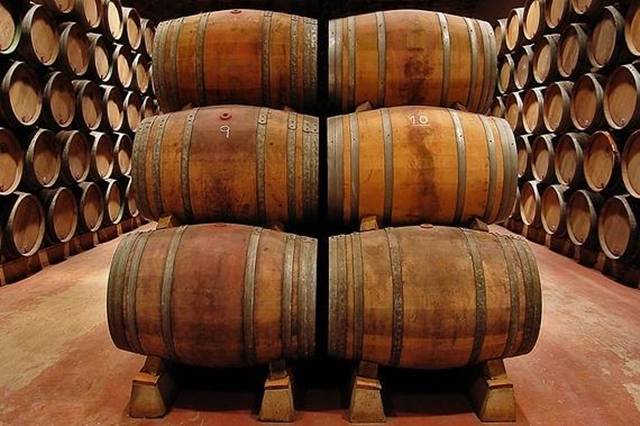California Wineries Face 30% Unsold Grapes as Alcohol Consumption Hits 85-Year Low
Producers turn to sustainability and premium wines to attract younger, health-conscious consumers amid industry oversupply and shifting tastes.
2025-10-22

Wine producers across California are facing a challenging period as Americans drink less alcohol and the industry contends with oversupply and shifting consumer preferences. Many wineries and grape growers are responding by focusing on targeted marketing, sustainable practices, and reducing production to adapt to the new market realities.
Freeman Vineyard & Winery in Sebastopol, California, recently achieved 100% organic certification. Owners Ken and Akiko Freeman marked the milestone with a media campaign, highlighting their long-standing commitment to environmental stewardship. The Freemans have been growing grapes organically for about 15 years, but the official certification is now a key part of their strategy to appeal to younger, health-conscious consumers. Ken Freeman said the organic label is important for selling their $50- to $85-per-bottle Pinot Noir to a new generation of wine drinkers.
The wine industry’s difficulties are not limited to changing consumer habits. According to a recent Gallup survey, only 54% of Americans say they consume alcohol, the lowest rate since the question was first asked in 1939. More Americans now believe that even moderate drinking is bad for health. Trade barriers in Canada, the largest foreign market for U.S. wine, and a global oversupply of wine and grapes have also contributed to what some analysts call a crisis for the industry.
Karissa Kruse, president of Sonoma County Winegrowers, said that younger people are drinking less or choosing alternative beverages, including low- and no-alcohol options. She noted that tourism in Sonoma County has also declined, which has affected local wineries. While the region was somewhat insulated from these trends in previous years, Kruse said the impact has become more noticeable in 2025.
To address these challenges, many wineries are shifting their marketing strategies. They are targeting specific consumer groups and emphasizing the premium quality of their wines. The 2025 vintage is expected to be one of the best in recent years due to favorable weather conditions. A cool spring and mild summer allowed grapes to mature slowly, resulting in higher yields and improved quality. Growers across California report that red wines show depth and structure while whites offer freshness and precision.
Aaron P. Lange, president of LangeTwins Family Vineyards and Winery in Acampo, California, said that cooperation between winemakers and growers has helped deliver exceptional quality this year. In regions like Lodi and the Central Coast, winemakers are seeing vibrant flavors and excellent color in their grapes.
Wineries are also experimenting with new ways to attract visitors. In Sonoma County, some have introduced happy hours and waived tasting room fees on certain days to encourage more people to visit. Kruse said that while sales of wines priced at $10 or below have declined, there is growth in sales of bottles above $50. She believes that younger consumers are willing to spend more on special occasions.
Sustainability has become another major focus for California wine producers. According to the California Sustainable Winegrowing Alliance (CSWA), 65% of the state’s wine grape acreage is now certified by a third-party sustainability program—up from 32% in 2020. This represents about 90% of all California wine sold today. The CSWA has developed a Climate Action Toolkit that outlines practices such as using cover crops for soil health, increasing renewable energy use, optimizing nitrogen with compost and livestock, and improving water efficiency with drip irrigation.
The organic wine market is growing rapidly worldwide. A report by Grand View Research estimates that the global organic wine market will reach $21.48 billion by 2030, up from $11.89 billion in 2024. While European wines dominate the market share, North America—led by U.S. producers—is the fastest-growing region.
Ken Freeman acknowledged that organic farming costs more due to increased labor and more frequent application of organic pesticides. However, he said that investing in organic practices is worthwhile because it aligns with consumer values and market demand.
Oversupply remains a significant issue for grape growers. Allied Grape Growers’ Jeff Bitter has called for the removal of tens of thousands of vineyard acres over the past two years to help balance supply with demand. In 2024 alone, about 37,000 acres were removed from production, but nearly 20,000 new acres were planted at the same time. Bitter estimates that another 40,000 acres have been pulled out since last year’s harvest.
Despite these efforts, many grapes remain unsold or are left unharvested. The Sonoma County Winegrowers predict that up to 30% of grapes could go unsold this year. Bitter said that this year’s relatively small crush—expected to be under 2.5 million tons—could help bring supply and demand closer together by next year.
Industry leaders will discuss these trends at the Unified Wine and Grape Symposium scheduled for January in Sacramento. The event will feature presentations on the state of the industry and strategies for navigating ongoing challenges.
As American drinking habits change and economic pressures persist, California’s wine producers are adapting through innovation in marketing, sustainability efforts, and careful management of production levels. These changes reflect a broader shift as wineries seek to connect with new consumers while maintaining quality and environmental responsibility.
Founded in 2007, Vinetur® is a registered trademark of VGSC S.L. with a long history in the wine industry.
VGSC, S.L. with VAT number B70255591 is a spanish company legally registered in the Commercial Register of the city of Santiago de Compostela, with registration number: Bulletin 181, Reference 356049 in Volume 13, Page 107, Section 6, Sheet 45028, Entry 2.
Email: [email protected]
Headquarters and offices located in Vilagarcia de Arousa, Spain.